Introduction
Welcome to Moths of Block Island. This website is intended as a comprehensive guide to the moth fauna of Block Island, Rhode Island, for use by professional entomologists, conservationists, and moth enthusiasts alike, and is the culmination of several years of survey efforts on the island. The current island survey, led by Aaron Hunt in collaboration with Nigel Grindley, has recorded over 1,200 species of moths since 2015, with detailed data gathered since 2018 on the local phenology, abundance, and distribution of each species. In addition to generating this online identification guide and repository of information on the island’s moths, this survey provides a detailed snapshot of Block Island’s moth fauna. This baseline measurement can be used in the coming decades in analyses of the changes that will occur on the island due to climate change, development, habitat succession, and species invasion.
Moths are one of the most diverse and abundant groups of insects, with about 140,000 described species worldwide. Nearly 12,000 named moth species are found in the continental US and Canada, and probably a few thousand more await formal scientific description. Most moths consume live plants as larvae, though some feed on decaying plant matter or other detritus; a few are even carnivorous. Modes of feeding on plants are highly varied: while many feed externally on leaves, others are stem borers, leafminers, or root feeders, and some feed underwater on aquatic plants. Adults of many species nectar at flowers, but some lack functional mouthparts and die soon after mating. Moth caterpillars and adults serve key ecological roles as pollinators, food sources, and recyclers of organic waste. They are also indicators of ecosystem health, and their close associations with plants make them useful indicators of local floral composition.
Block Island’s Moths
More than 1,250 species of moths are known from Block Island. Given Block Island’s small size of just under 10 mi2 (6,400 acres), recent history of clear cutting for agriculture and fuel and resultant lack of many regionally common tree species, and location in a region of relatively low moth diversity, this species total is a testament to the extraordinary diversity of moths. The current survey of the island’s moths has included hundreds of nights of observation at locations throughout Block Island (Fig. 1). In spite of the effort that has already been dedicated to documenting the island’s moths, the staggering diversity of the group ensures species new to the island list are still found regularly.
The order Lepidoptera is one of the most diverse groups of insects, with over 150,000 described species worldwide. About a tenth of these species are butterflies (including skippers), which comprise a single superfamily of Lepidoptera: Papilionoidea. Butterflies and skippers are well-established as monophyletic, or a clade, meaning all the descendants of a single common ancestor. The moths constitute the remainder of the order Lepidoptera and are a paraphyletic group, one including all descendants of its most recent common ancestor except for one clade, in this case Papilionoidea. The macrolepidoptera (here defined as Macroheterocera sensu van Nieukerken et al., 2011) are a very diverse clade of mostly medium to large moths. Microlepidoptera is the traditional term for the remainder of Lepidoptera; butterflies, previously considered a group of macrolepidoptera, are now accepted to have arisen outside that group. Caddisflies (Trichoptera) are the closest living relatives of Lepidoptera; the orders are therefore sister taxa in the terminology of phylogenetics. Amphiesmenoptera is the accepted name for the clade composed of Trichoptera and Lepidoptera. (Refer to Fig. 2 for a visual depiction.)
Block Island’s moth fauna is split fairly evenly between Macrolepidoptera and Microlepidoptera, excluding butterflies, with the microlepidoptera accounting for 55% of identified species. Nearly all of the dozens of unidentified species that have been found on the island are micromoths, so this percentage will increase somewhat in the coming years as more identifications are made. The most speciose family on Block Island is Noctuidae, with 225 species documented so far. Rounding out the top five are Tortricidae (198), Geometridae (130), Crambidae (121), and Erebidae (117); these five together comprise just under two thirds of the island’s known moth fauna (Fig. 3). In total, 49 moth families are known to occur on Block Island. The vast majority of the moths found on Block Island breed locally, though a few are migratory species, most of which arrive in the fall.
Block Island is almost entirely devoid of native oaks and conifers. The island has a number of solitary red cedar (Juniperus virginiana) and small, widely scattered stands of (introduced) Japanese black pines (Pinus thunbergii). Only a handful of oaks grow wild on the island. The reintroduction of native trees in these and other groups would allow for the reestablishment of many moth species reliant on trees that have not been found on Block Island in several decades. Currently, the most abundant native trees and shrubs on Block Island are bayberry (Myrica pensylvanica), cherry (Prunus spp.), shad (Amelanchier spp.), arrowwood (Viburnum dentatum), and red chokeberry (Aronia arbutifolia). Unsurprisingly, these species are known food plants of many of the island’s most abundant moth species.
The peak season on Block Island for diversity of adult moths occurs in July; nearly half of the species known from the island have been recorded on wing in late July. Over 200 species can be found as adults at any time of year from late May through late September (fig. 4). However, a small number of species account for a large percentage of all the individual moths on the island. From 2018 to 2021, of the 957 species I recorded, 61 accounted for half the total abundance; at my porch lights, 37 of the 735 species recorded over that period accounted for half the abundance (Fig. 5). Species abundances vary greatly between locations on Block Island as well as over the course of a season and between seasons. While a few species are common across nearly the entire island, most vary markedly in abundance between habitats, and some are highly locally distributed due to their habitat or host plant requirements.
Acknowledgements
This project could not have been accomplished without help from numerous people. First, I must thank my family for tolerating fridge and freezer doors full of vials and jars; my messy, sprawling pinning workplaces around the house; and the boards creaking late at night as I checked the lights. I would also like to thank them for their occasional assistance with my blacklighting expeditions and for dutifully attending my public mothing events.
Nigel Grindley has been my collaborator on this project from the beginning. He has helped me develop my ideas and plans for the survey and website, and he and his wife Cathy have hosted me on several winter and early spring visits to Block Island. He has contributed thousands of photographic records and hundreds of specimens from his home lights in the southwest of Block Island and has helped me on at least a few blacklighting nights each season.
Jason Dombroskie (Cornell) taught me moth dissection and provided me with my introduction to collection curation at the CUIC, and Terry Harrison has been my first mentor in moth phylogenetics and identification of Gelechioidea and other smaller micromoths.
Dissection and determination of collected material was performed by Erik van Nieukerken (Nepticulidae), Terry Harrison (misc. pre-Tortricidae), Steven Whitebread (Parornix), Jean-Francois Landry (Gelechioidea), Michael Sabourin (Tortricidae), Brian Scholtens (Pyraloidea), Hugh McGuinness (Crambus), Paul Dennehy (Pyraustinae), Debbie Matthews (Pterophoridae), JoAnne Russo (Noctuoidea, Geometridae), and Chris Schmidt (Acronicta, Apantesis). C. Schmidt additionally provided assistance with identification of some Geometroidea and Noctuoidea dissected by J. Russo, as did Tony Thomas. Mark Metz (Gelechiidae) and Sangmi Lee (Gelechiidae) identified some specimens from T. Harrison’s dissections. C. Eiseman provided information on leafmining species, and his Leafminers of North America has been an invaluable identification resource.
I would like to thank the many people on and off Block Island who helped make this survey a success, especially Kim Gaffett (TNC-BI), who helped us obtain landowner permission for blacklighting nights; Scott Comings, who provided us PDF files of the reports from the surveys of the 1990s; and the landowners who granted us access to their properties for our survey. David Gregg led yearly mothing events on Block Island that we happily joined as well as provided guidance and encouragement to both of us early in our survey efforts. Charlie Vandemoer (USFWS-RI) permitted use of Block Island Wildlife Refuge lands for surveying work, and Mark Mello provided information on his 1990s and 2010 surveys.
Nigel and I made every effort to take high quality images of each species occurring on Block Island, but where we failed and for species with historical records only, Ken Childs, Tom Murray, Carl Barrentine, Robert Lord Zimlich, Charlie Eiseman, David Reed, Bo Zaremba, John R. Maxwell, Fyn Kynd, Marcia Morris, John Davis, Joseph V. Higbee, Sue Gregoire, Ilona Loser, John Lee, Ann Hendrickson, Mark Wheeler, Gary McDonald, Cynthia Van Den Broeke, and Nolie Schneider graciously allowed us to use their images here. Especially for species variable in markings, care was taken to select specimens that closely resembled the individual(s) that have been seen on Block Island.
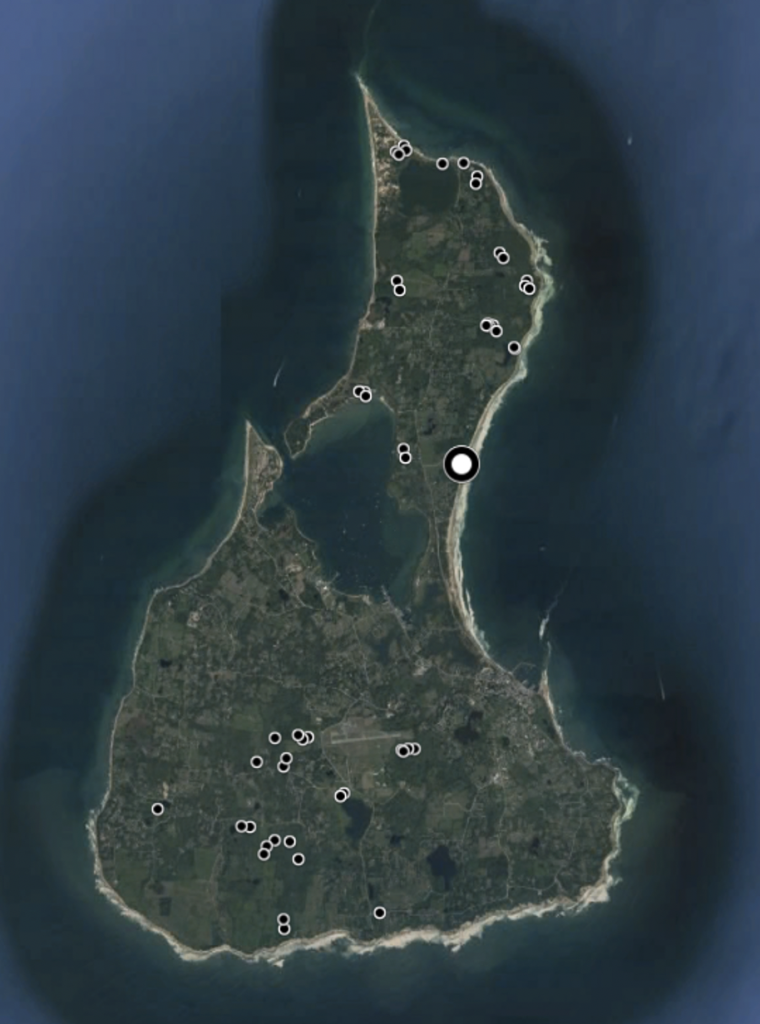
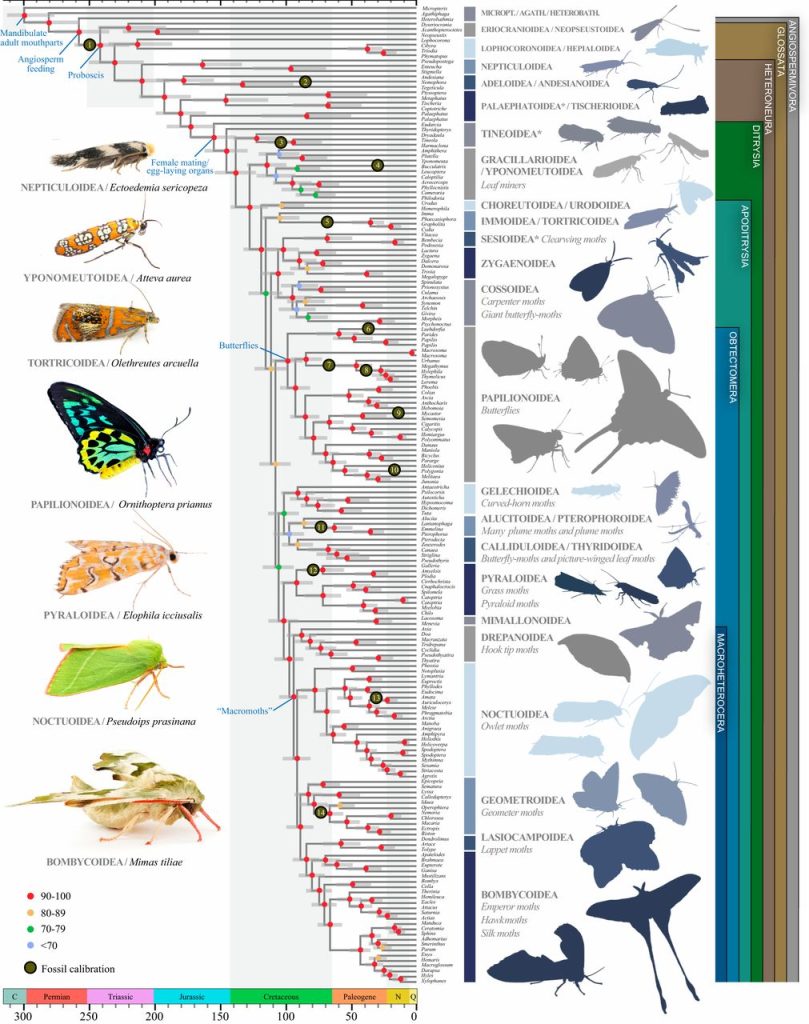
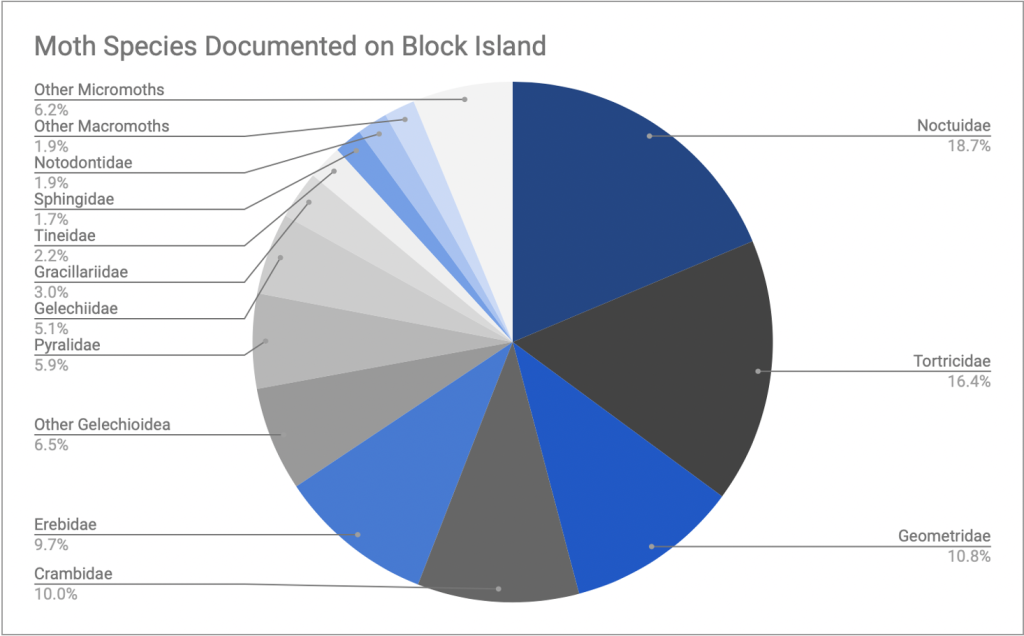
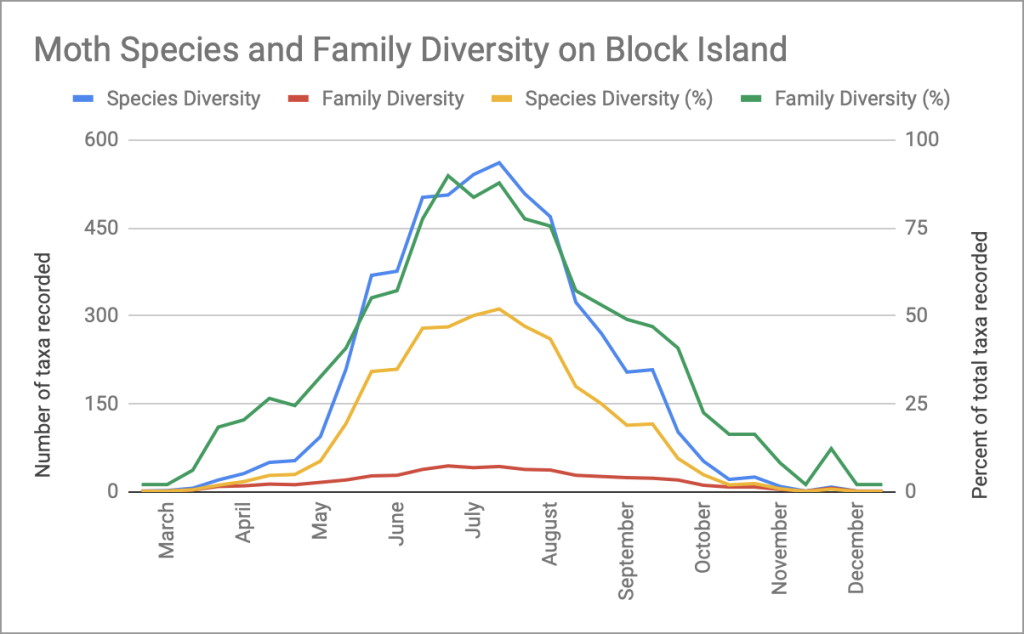
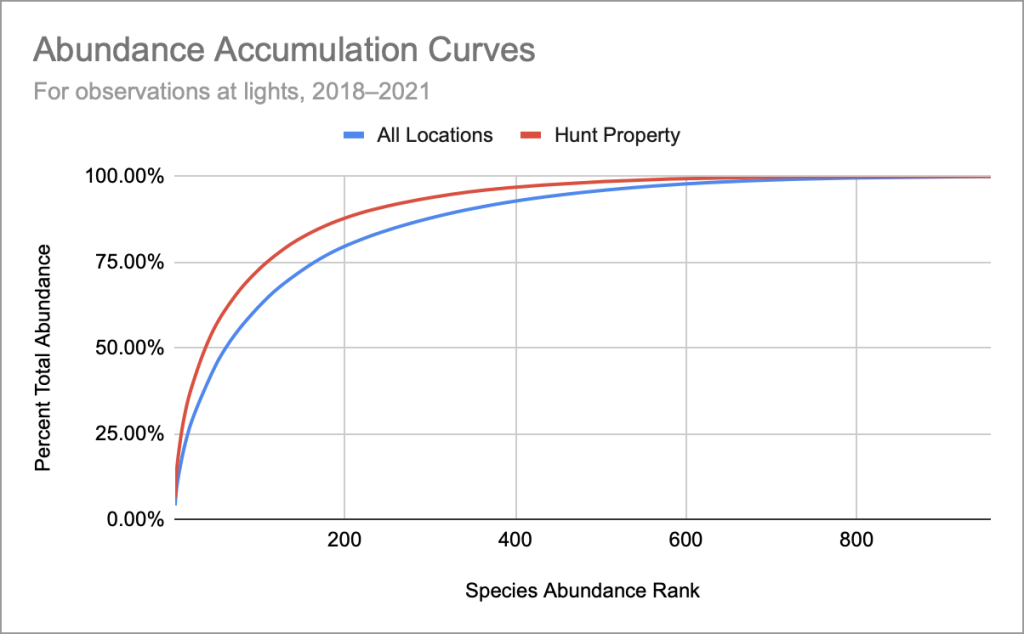
Eiseman, C., 2019. Leafminers of North America. Self-published digital book. 1857 pp.
Kawahara, A.Y., D. Plotkin, M. Espeland, K. Meusemann, et al., 2019. Phylogenomics reveals the evolutionary timing and pattern of butterflies and moths. PNAS 116(45): 22657–22663.